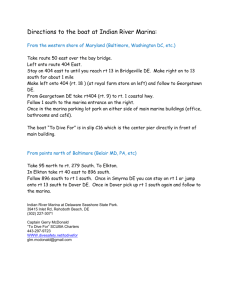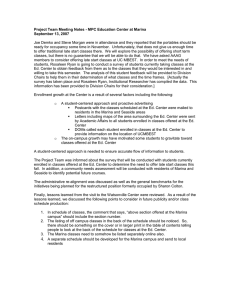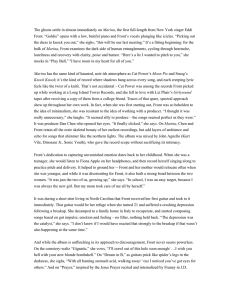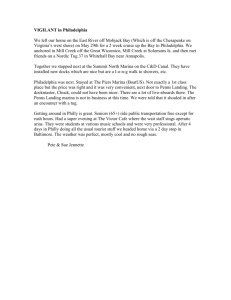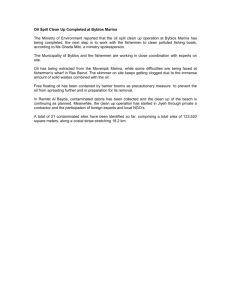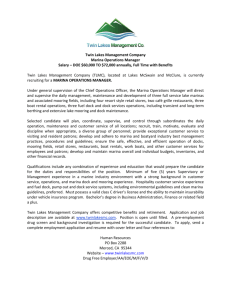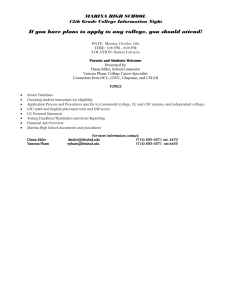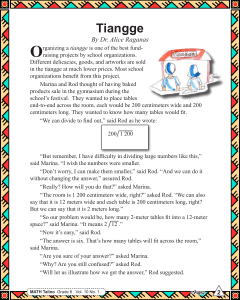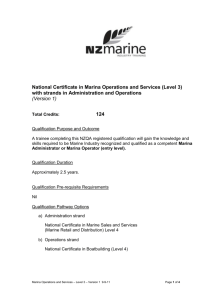Formal Theories in Political Science
advertisement
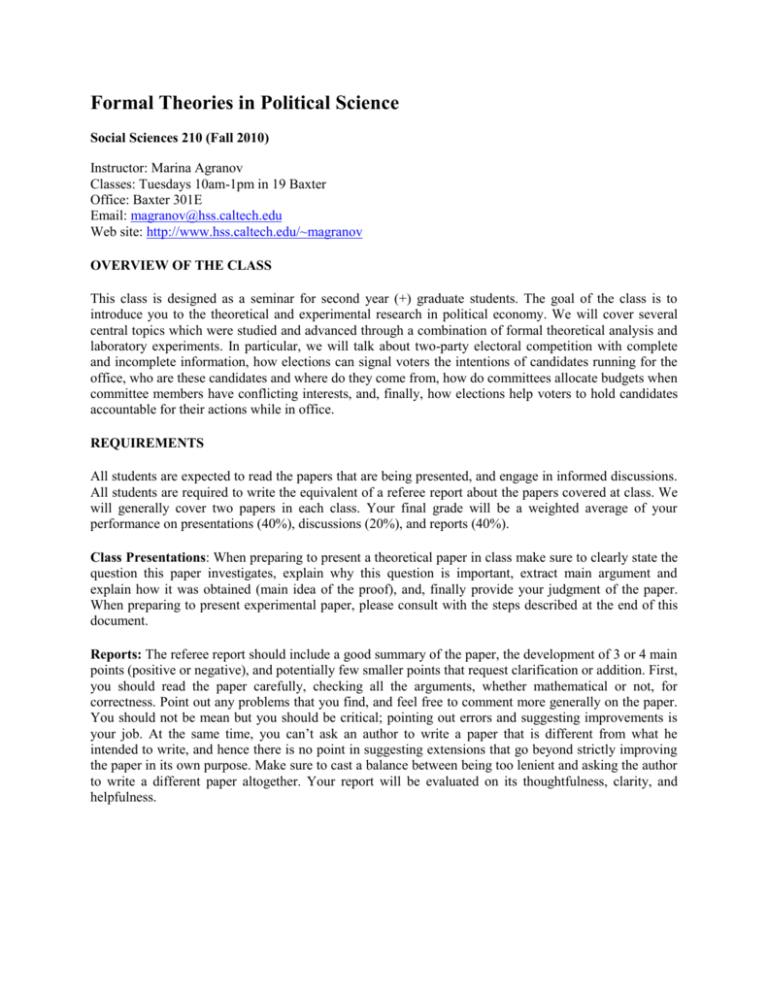
Formal Theories in Political Science Social Sciences 210 (Fall 2010) Instructor: Marina Agranov Classes: Tuesdays 10am-1pm in 19 Baxter Office: Baxter 301E Email: magranov@hss.caltech.edu Web site: http://www.hss.caltech.edu/~magranov OVERVIEW OF THE CLASS This class is designed as a seminar for second year (+) graduate students. The goal of the class is to introduce you to the theoretical and experimental research in political economy. We will cover several central topics which were studied and advanced through a combination of formal theoretical analysis and laboratory experiments. In particular, we will talk about two-party electoral competition with complete and incomplete information, how elections can signal voters the intentions of candidates running for the office, who are these candidates and where do they come from, how do committees allocate budgets when committee members have conflicting interests, and, finally, how elections help voters to hold candidates accountable for their actions while in office. REQUIREMENTS All students are expected to read the papers that are being presented, and engage in informed discussions. All students are required to write the equivalent of a referee report about the papers covered at class. We will generally cover two papers in each class. Your final grade will be a weighted average of your performance on presentations (40%), discussions (20%), and reports (40%). Class Presentations: When preparing to present a theoretical paper in class make sure to clearly state the question this paper investigates, explain why this question is important, extract main argument and explain how it was obtained (main idea of the proof), and, finally provide your judgment of the paper. When preparing to present experimental paper, please consult with the steps described at the end of this document. Reports: The referee report should include a good summary of the paper, the development of 3 or 4 main points (positive or negative), and potentially few smaller points that request clarification or addition. First, you should read the paper carefully, checking all the arguments, whether mathematical or not, for correctness. Point out any problems that you find, and feel free to comment more generally on the paper. You should not be mean but you should be critical; pointing out errors and suggesting improvements is your job. At the same time, you can’t ask an author to write a paper that is different from what he intended to write, and hence there is no point in suggesting extensions that go beyond strictly improving the paper in its own purpose. Make sure to cast a balance between being too lenient and asking the author to write a different paper altogether. Your report will be evaluated on its thoughtfulness, clarity, and helpfulness. Summary Write a short summary of the paper using your own words. What is the question asked by the author? What is the modeling strategy? What data is used? How is the hypothesis formulated and tested? What are the results? The purpose of this section is to summarize the paper in a way that a person can understand the essence of the paper and its contribution, without having to read it Major comments You then take 3 or 4 major positive or negative points that you have on the paper, one at a time. In order to do this, check carefully the question, the theory/model, link to the empirical analysis, the presentation of the data, the econometric analysis, and the results. Below is a checklist of the kinds of questions you should ask yourself to help you raise these points. For a positive point, you want to argue why the question is particularly important, or the approach particularly novel, or the techniques new, or the identification strategy innovative, the data very unusual, etc. For a negative point, you are often looking for lack of correspondence between the idea and the model, the model and the empiricism, the empirical strategy and the conclusion. Another argument for rejecting a paper is when the paper has nothing wrong but is boring and not new in any way. If this is one of your points, then you need to refer to other works to show why this is all well known and already done. Minor comments Here you can talk about less important though useful comments and suggestions to improve the paper. Keep in mind the following questions when writing the referee report: - - Is the topic clearly explained? Could the question be made more precise? Does the author do a good job of motivating the question in the introduction? Is the answer to the question obvious in advance? Is the question original? What is the contribution of the paper? Does the author pose a question of reasonable scope (i.e., can she reasonably hope to answer the question in a short empirical paper)? Does the model formalize the argument given by the author in the question? Does the model incorporate those aspects of reality that the author seems to think are important? Is it possible to answer the question posed by the author within the context of the model? Is the model elegant? Is it simple? If it is not simple, is it unnecessarily complex? Could the author attack the problem with a simpler model? Is the notation clean and intuitive? Is the model internally consistent? If the paper is experimental, then - Does the author present a clear description of the experiment? - Does the design of the experiment well suited to answering the question author poses? - If you had to replicate the author's study five years from now, is there sufficient information in the paper about the experimental design and collection of the data that you could do it? - Are the results clearly stated and presented? - Are the results related back to the question? - Are appropriate caveat mentioned? - Do the conclusions concisely summarize the main points of the paper? - Are the conclusions reached by the author well supported by the evidence? - Are you convinced? What did you learn from this paper? Schedule September 28 - Organization and Median Voter Theorem 1. Organization + Calvert (1985) 2. Morton (1993) Marina Marina October 5 - Valence models 1. Groseclose (2001) 2. Aragones and Palfrey (2004) October 12 – Signaling in Electoral Competition 1. Banks (1990) 2. Calander and Wilkie (2007) October 19 – Candidates Citizens 1. Osborne and Slivinski (1996) 2. Cadigan (2005) October 26 – Paradox of (not) Voting 1. Several explanations – overview lecture 2. Levine Palfrey (2007) Marina November 2 – Multilateral Bargaining (part 1) 1. Baron and Ferejohn (1989) 2. Frechette, Kagel and Lehrer (2003) Marina November 9 – Multilateral Bargaining (part 2) 1. Morelli (1999) 2. Frechette, Kagel and Morelli (2005) November 16 – Veto power in committees 1. Winter (1996) 2. Kagel, Sung and Winter (2010) November 23 – Political Accountability (part 1) 1. Barro (1973) and Ferejohn (1986) 2. Coate and Morris (1995) November 30 – Political Accountability (part 2) 1. Persson, Roland and Tabellini (1997) 2. Maskin and Tirol (2004) Marina HOW TO PRESENT EXPERIMENTAL PAPER Based on the material by Andrew Schotter (NYU) 1) State the title of the paper along with co authors 2) State what the paper is about, i.e., “This is a paper on repeated game theory” or “This is a paper on time discounting” or “This is a paper on elections with incomplete information” etc. This sentence allows the audience to know simply what you will talk about. 3) Give a motivation for the paper. The motivation should present a puzzle or relate to some interesting stylized fact in the world or refer to the literature. 4) Your motivation should end in the stating of some basic research questions or hypotheses that it inspires. In other words, given your motivation you should then tell the audience what puzzles or questions this raises that you want to answer. You can state hypotheses here, more general questions, and conjectures, whatever. At this point you need not be very formal, that will come later. But the audience needs to know at this point what you are looking for. 5) Next you should tell them the results: not detailed results but a quick and general overview of the results. 6) Next if the experiment is based on any theory you should state it here. Here is where you should be formal and state exactly what you mean and exactly what you are talking about. At the end of this section you can restate your research questions in formal terms using the theory you just stated (or in the form that they will be tested in the results section). 7) Explain the experimental design whenever possible making sure that audience sees the connection between your design and your basic research questions. This is the place where you want to explain in great detail exactly what was done during the experiment. This is very important. You do not want people raising their hand and saying “I don’t understand what happens during the experiment”. Present a table with the experimental design showing the treatments, the number of subjects in each, etc. There should be no doubt about what you actually did. (Experimental papers can be tough sometimes since you may have to present theory and experimental results so there is many times a lot to get in, but you can’t present a paper and not explain the task that the subjects did.) 8) Now present the results. Remember that you need to present to results in answer to the questions you stated in steps 4 and 6. The results should first answer the questions “what happened” so you should start with descriptive statistics. People want an answer to the mystery here. At this point you should give them the “take away” lines you want them to have so that when others who were not at the talk ask what you said they can say “Oh, his/her punch line was xxxxxx”. People won’t remember many of the details but they will remember the basic point. After you do this then you can launch into more exotic econometrics if you have some or more formal presentation of regressions etc. 9) Finally, you need a conclusion which simply repeats the main points of the take away and also states future unanswered questions, or other possible interesting things you or someone else could do.
